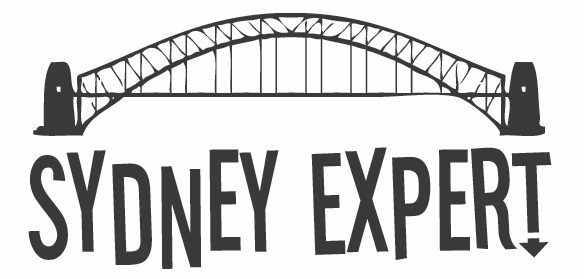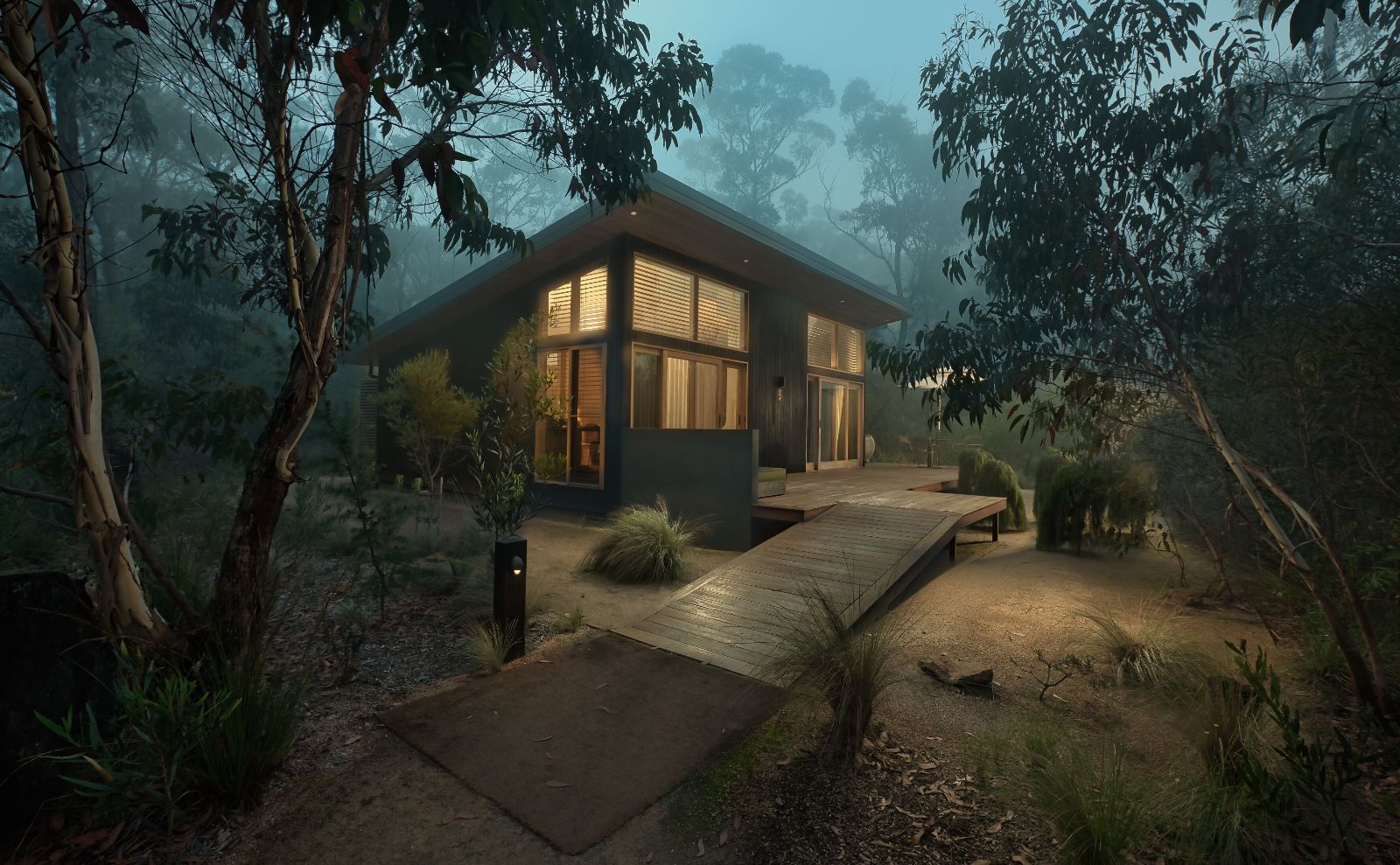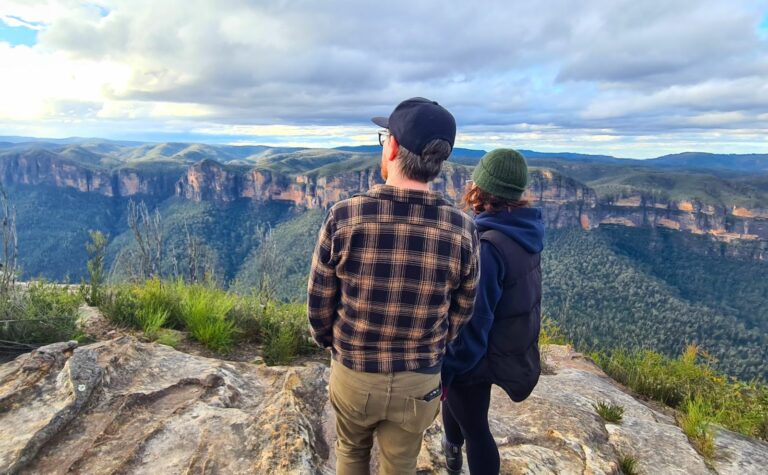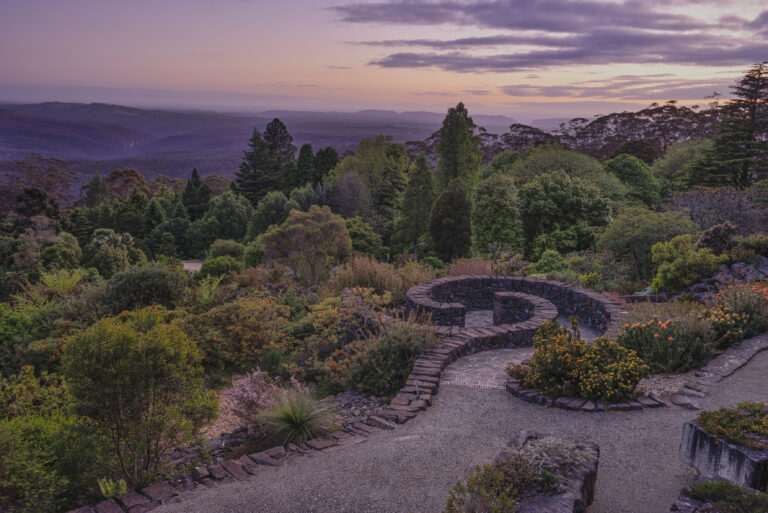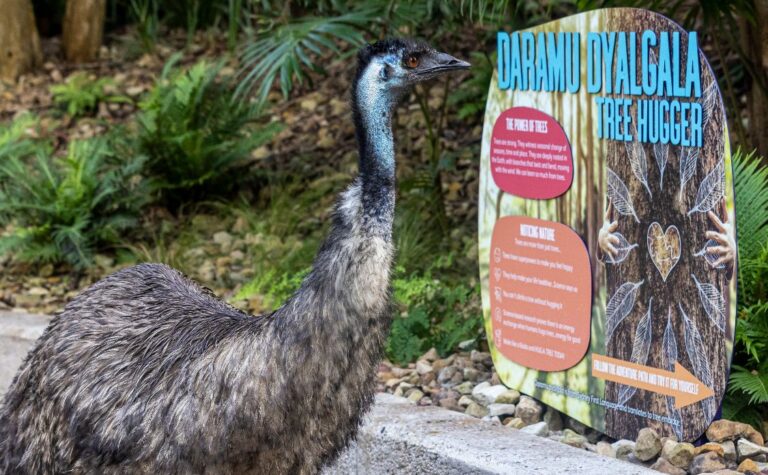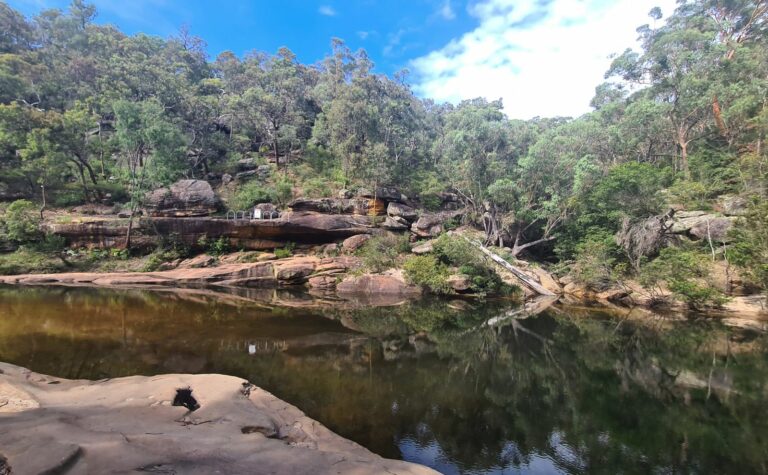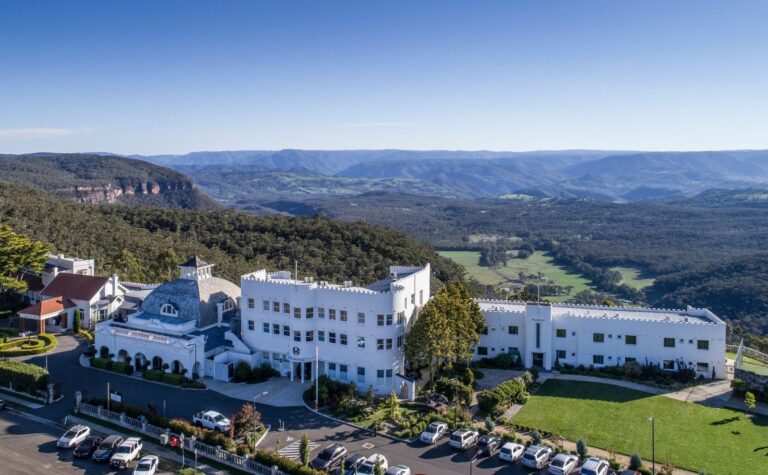A Weekend of First Nations Wisdom in the Blue Mountains
The Blue Mountains west of Sydney is known for its grand hotels, the steepest train in the world and on-trend food. But you can have a deeper, more meaningful experience by learning from the oldest continuous culture on earth. Here are some of the best ways you can access First Nations culture on a two-day visit.
This journey takes place on Gundungurra and Darug Country. We acknowledge these Traditional Custodians who have cared for this land for thousands of generations and whose knowledge informs the experiences shared in this article.
DAY ONE
Scenic World, Katoomba
We’re huddled around a table covered with maps, furs and hunting items at Scenic World in Gundungurra Country.
“Biimbiigang (Greetings),” our Buunyal Tour guide Stefanie Habel says.
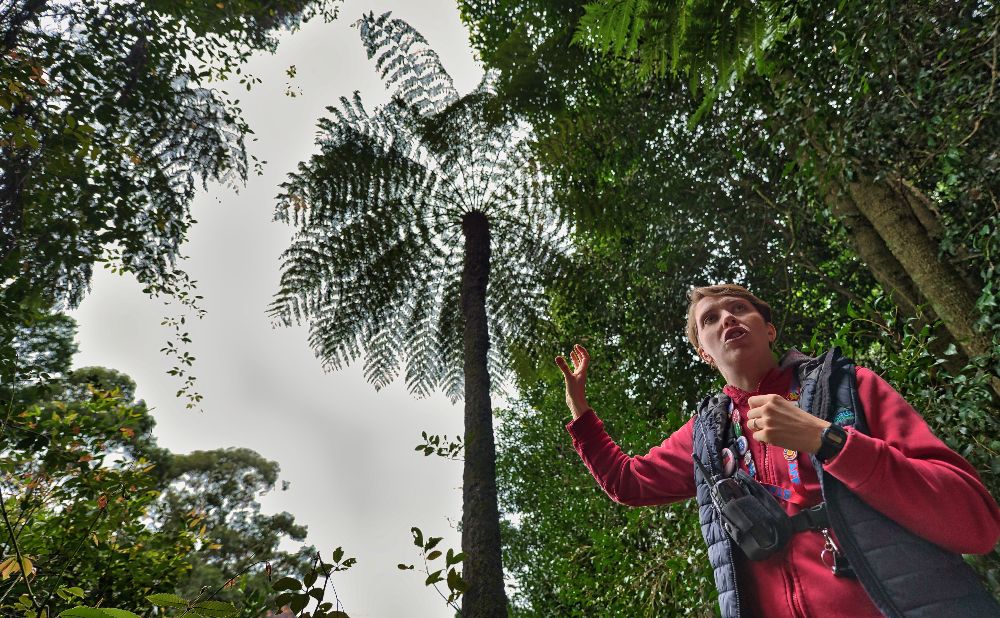
Over the next hour, we learn how geographic landmarks define ancient clan borders and the purpose of a smoking ceremony (to cleanse and heal). Stefanie tells us about bush tucker and the many uses of Lomandra grass and coolamons (long, shallow wooden bowls).
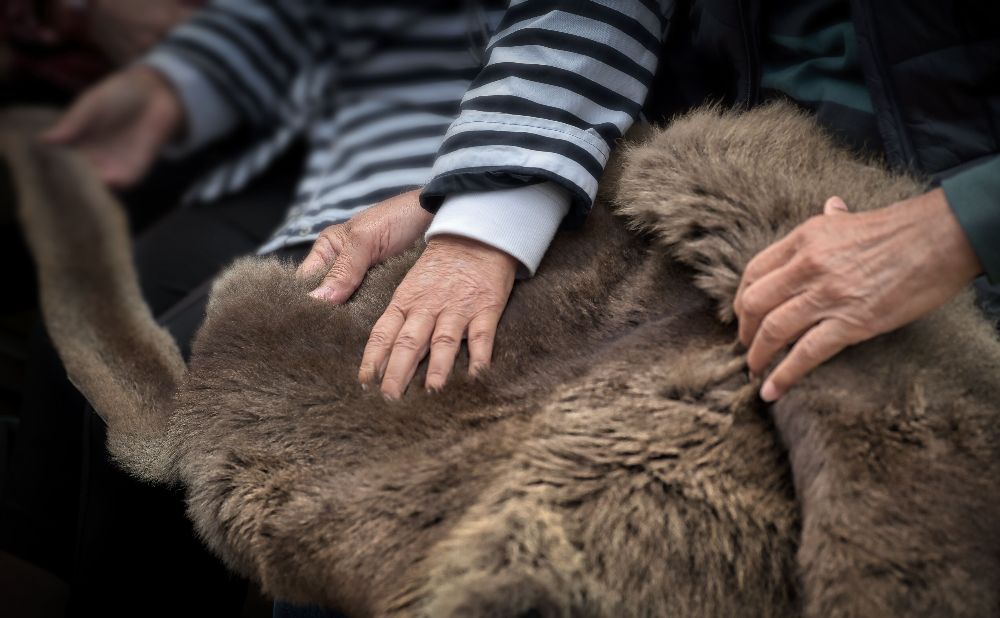
We hear which part of the gum leaf koalas eat, totem animals and how a baby’s story is carved into the possum skin they are wrapped in and added to throughout their life, natural remedies and different hunting methods and tools.
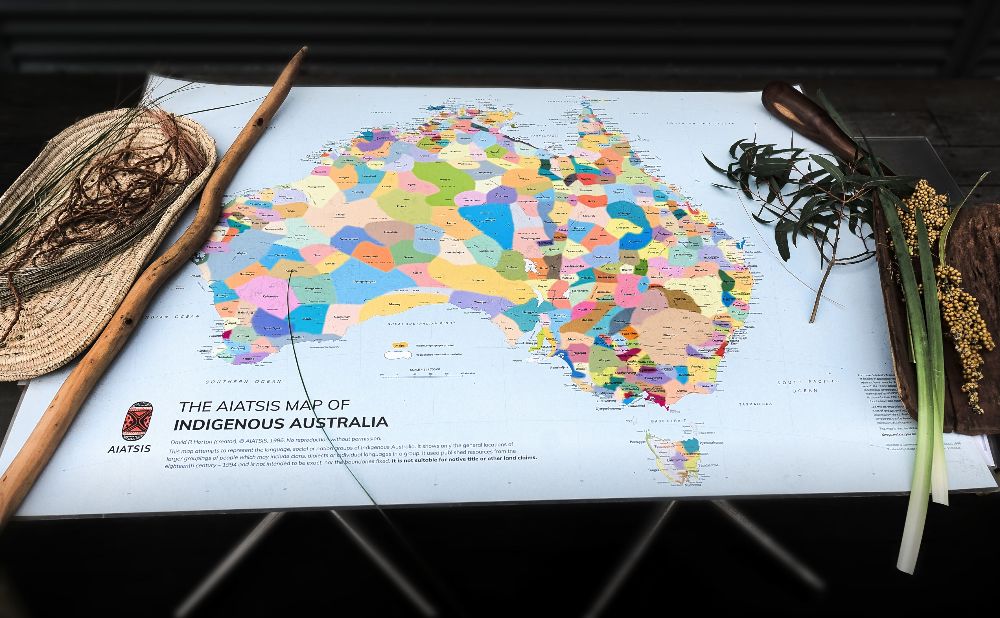
We learn there are approximately 200 Indigenous language groups in Australia, that many European roads follow ancient trade routes and many modern animal and place names are mispronounced Indigenous words.
We learn the uncomfortable heritage of Indigenous peoples in Australia: European settlement, the Stolen Generations and White Australia Policy of the past, and the ongoing fears of First Nations people.
But we also discuss change, tolerance, reconciliation and hope in a shared future when colour and race is irrelevant.
It’s an immersive tour of lore stories, traditional connections with plants and animals, and your guide’s own personal journey and history, as well as all the rides (Scenic Railway, Skyway, Cablecar and rainforest boardwalk).
For groups of up to 12, Buunyal is available each Monday, Tuesday, Thursday and Friday morning. The Buunyal Tour takes about 150 minutes and involves walking and some steps.
Lunch
You could traipse into Katoomba for lunch somewhere like The Bowery in Waratah St or Tempus at the top of Katoomba St.
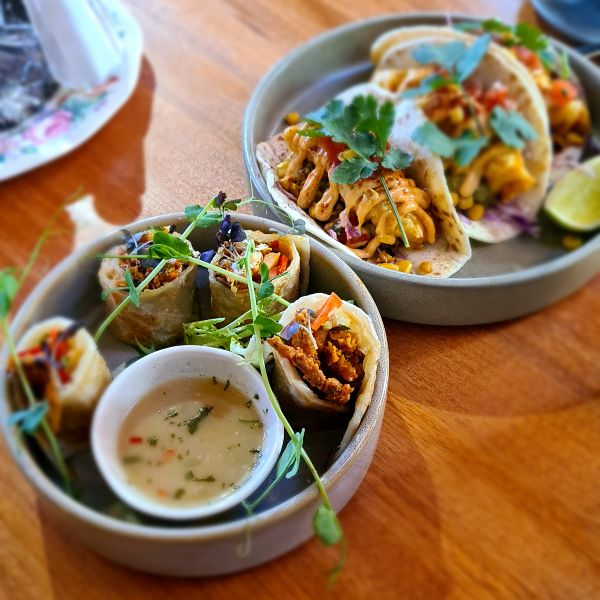
We had a burger and chips in the EATS270 dining space at Scenic World (you can also bring a picnic and eat at the table in Skyway Park).
Beyond Skyway
After the crowds have left Scenic World, we don on a harness and helmet, take an alcohol breath test and step into the Scenic Skyway. It glides across the Jamison Valley and hangs in the middle 270m above the rainforest, and we climb tentatively onto the top of the skyway.
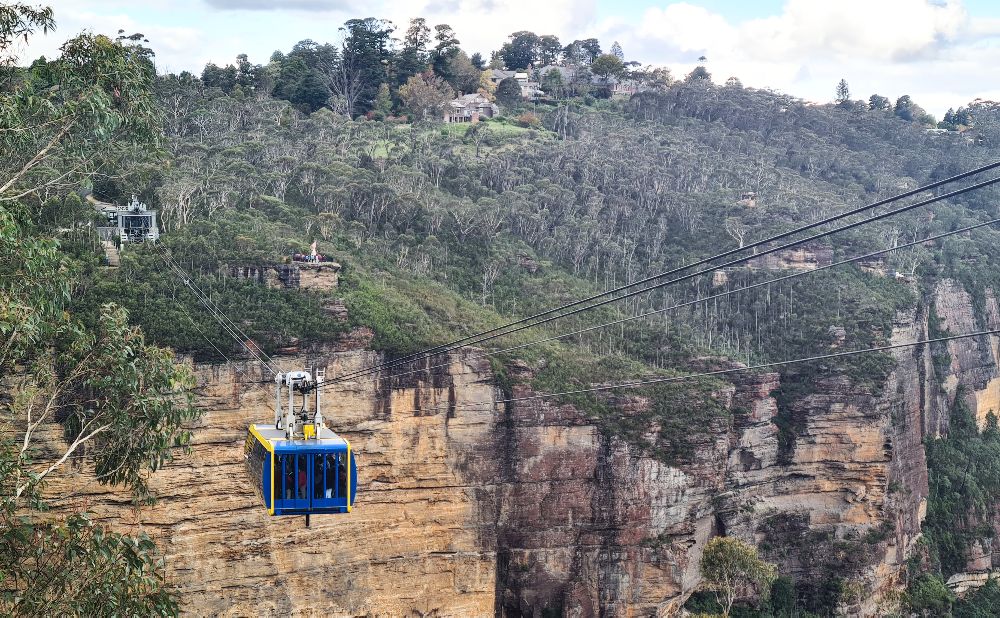
Clipped securely by cables, we inch forward and stare over the landscape, each ripple a chapter in a millennia-long story.
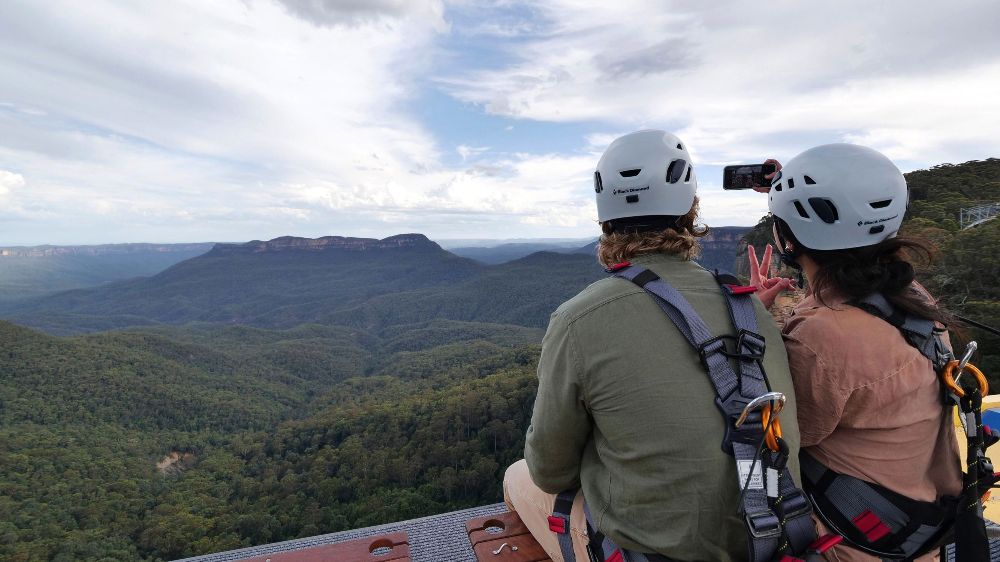
Sitting on the edge of the Skyway sipping a non-alcoholic drink while the sun slips behind a crease in the landscape, we feel like the only people on earth in a life, with its worries and challenges, deadlines and responsibilities paused.
Chalets at Blackheath
After a full-on day, we’re looking forward to an evening of luxury, and we’re not disappointed.
The matter-of-fact use of Indigenous touches give a genuine impression of First Nations culture and Gundungurra Country acknowledgement rather than a tokenistic trend.
There are Indigenous wild food snacks in our chalet (riberry, wattle seeded caramel popcorn, chocolate coated macadamia nuts) and an array of native ingredients to add to yoghurt toppers at breakfast – lemon myrtle, Davidson plum, pepperberry, saltbush, Rosella hibiscus, seasonal berries.
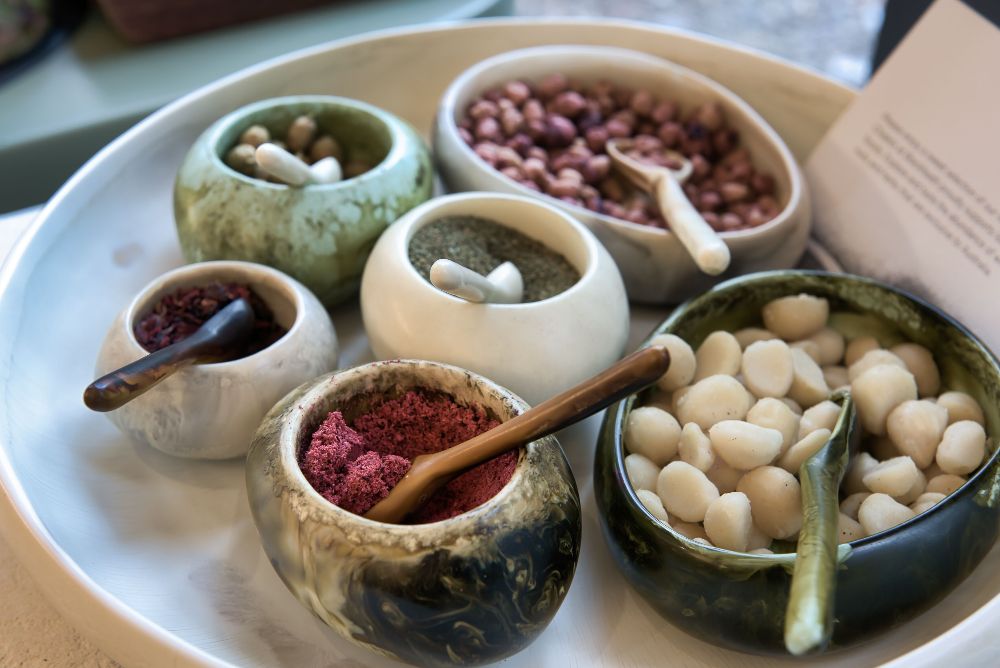
We roam the pathways between native plantings, trawling our hands over the fragrant rosemary and ginger before roasting marshmallows at the communal fire pit.
Like the other three secluded chalets, ours is inspired by the natural environment, including the nearby Grand Canyon track and Walls Cave, a walk of great Indigenous significance.
The Room
The clay tiles in the shower are the colours of the glowing escarpment, while the reclaimed blackened timber of the exterior references the 2019 Black Summer bushfires that destroyed the original Jemby Rinjah Eco Lodge.
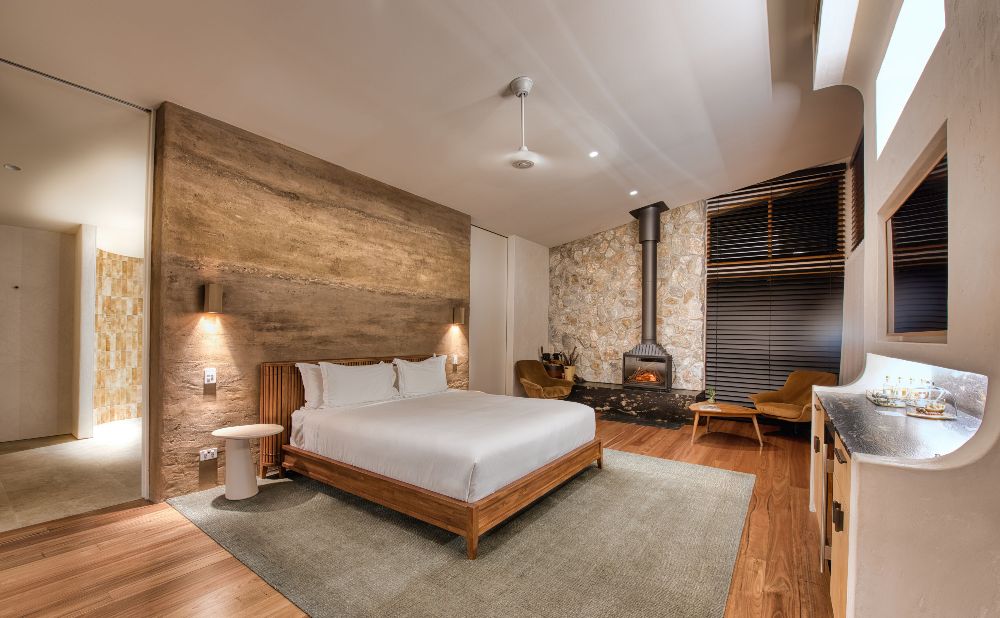
Each chalet features a king-sized bed, kitchen, mini-bar, rammed earth walls, fireplace and an oversized limestone bathroom with twin waterfall showers and a deep-soak freestanding bathtub looking out onto the bush.
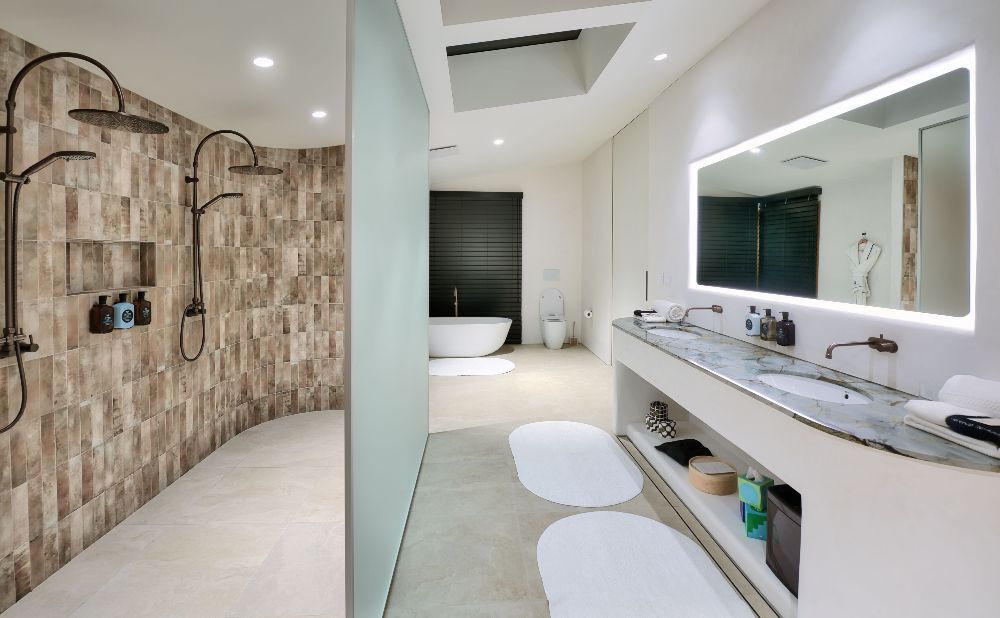
Dinner
Blaq Restaurant Bar, Ates Blackheath or Frankie & Mo’s in Blackheath are all great dinner options, while The Lookout Echo Point is a good place to watch the sunset, drink in hand.
DAY TWO
Blue Mountains Heritage Centre
Rising early, we detour 600m (10-minute walk) down the road to Evans Lookout at the entrance of the 6km Grand Canyon walk circuit.
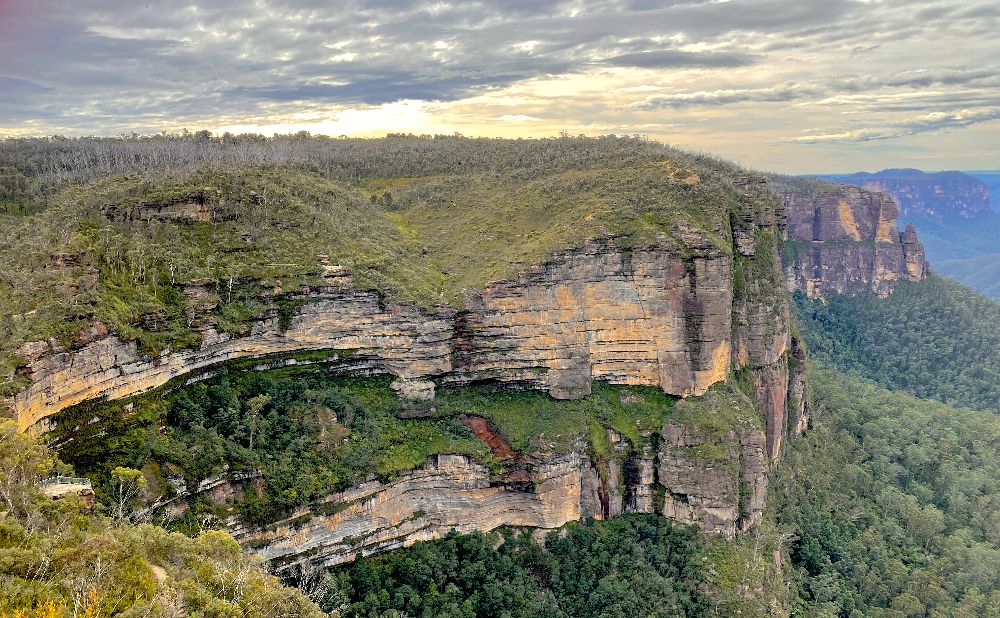
Trekked slowly, it takes about three hours, wending through lush rainforest, past waterfalls, cliffs and towering rock overhangs, finishing at Neates Glen carpark, a short stroll back to Chalets at Blackheath.
A few streets over in Govetts Leap Rd, Blue Mountains Heritage Centre is where you can learn about local Aboriginal culture, plants and animals and the walking tracks around the Grose Valley through the permanent Outside In exhibition.
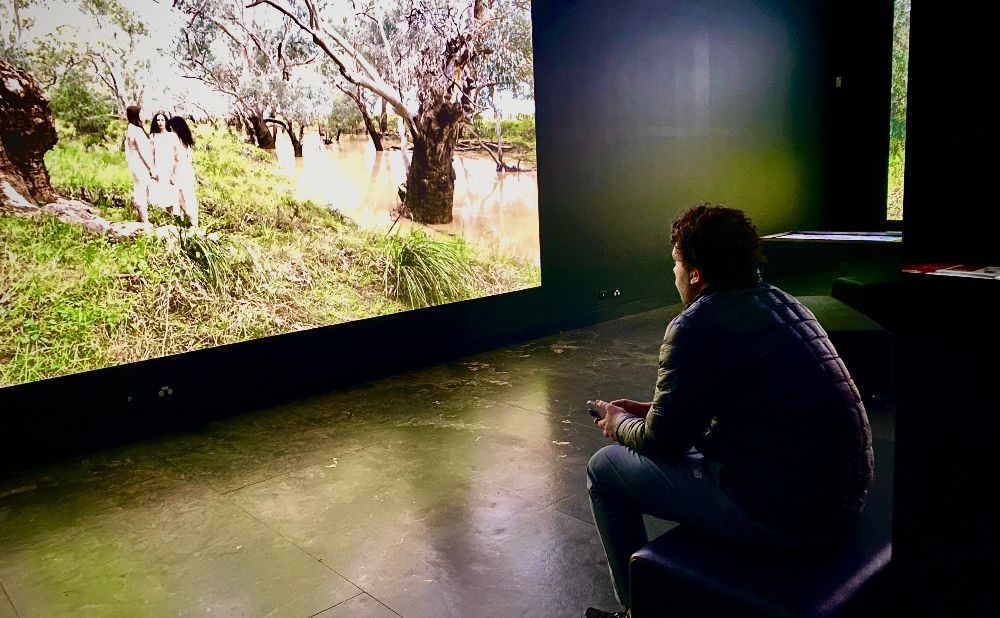
There’s also a virtual reality experience ($10 for 15 minutes), where you can travel through the spectacular Claustral Canyon.
Fairfax Heritage walking track starts here and leads to the picnic area and magnificent views of Govetts Leap lookout.
Into the Blue Exhibition
Within Blue Mountains Cultural Centre in Katoomba, this interactive exhibition explores the natural and social landscapes of the Blue Mountains. Allow about an hour to navigate your way through the fascinating stories to fully appreciate the richness and wonders of the Blue Mountains World Heritage area.
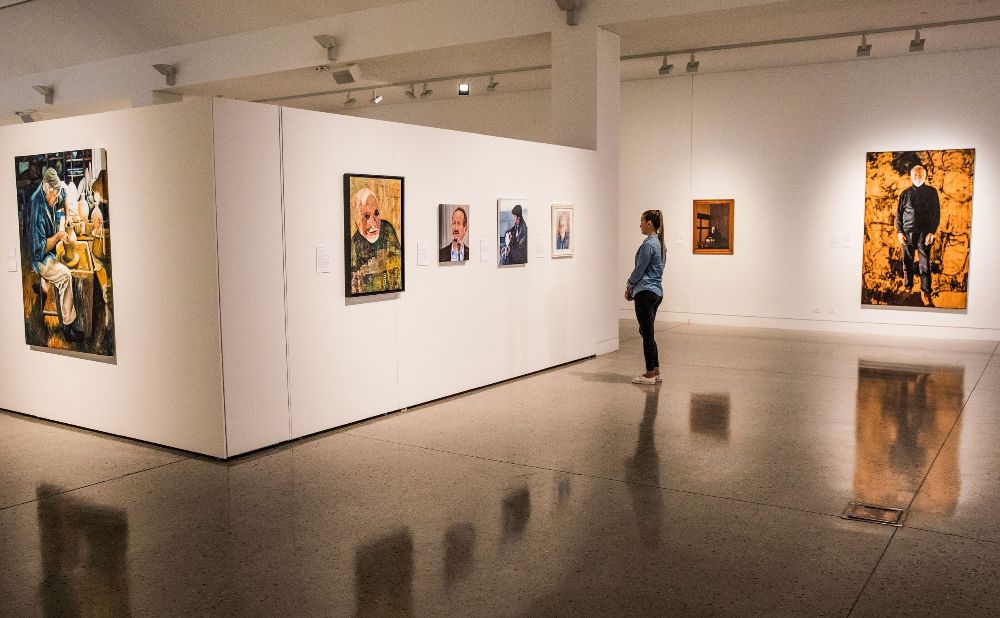
Co-curated with Dharug artist and curator Leanne Tobin, the Ngurra Bayala (Country speaks) exhibition celebrating the video work of seven female First Nations artists is on until December 2025. Artworks by Megan Cope, Fiona Foley, Julie Gough and r e a are on long-term loan from the National Gallery of Australia.
The exhibition also showcases Blue Mountains Aboriginal practitioners Aunty Sharyn Halls (with Craig Bender and Vera Hong); Jo Clancy (with Sue Healey) and Leanne Tobin.
Tickets: Adults $5.50, Concession $3.20, InSight members and children under-16 free includes access Blue Mountains City Art Gallery.
Lunch
Located in the middle of Katoomba, Blue Mountains Cultural Centre is surrounded by good lunch options. Choose from Basil Nut, Pomegranate or Elephant Bean cafes for example, or you can opt for simple fare at the onsite café.
The Gully (Garguree)
An important place for Gundungurra, Darug and other Aboriginal people, The Gully forms the headwaters of the Katoomba Falls Creek, which is part of the Warragamba Catchment that provides Sydney’s water.
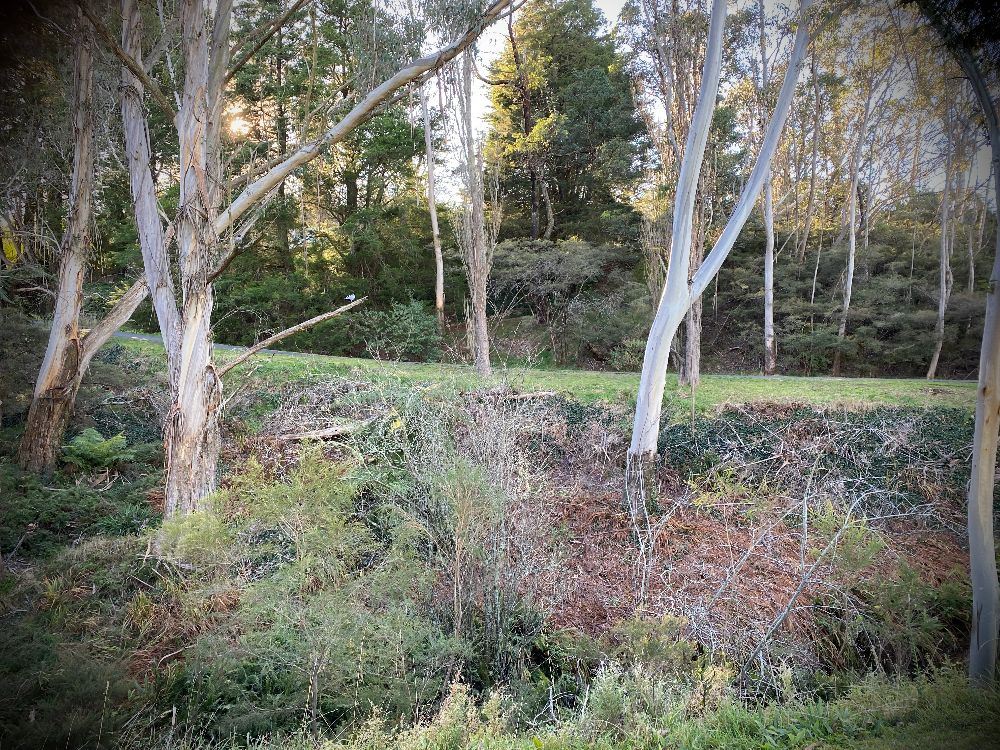
Before European settlement, the Gundungurra and Darug peoples used The Gully as a summer camp.
In 1946, the area became a tourist park and Kedumba Creek which feeds to Katoomba Falls was dammed, forming an ornamental lake with the shell of a Catalina PBY-5 flying boat in the middle. People could pay to visit and play with the aeroplane controls, while speedboat rides went around it. There were also tearooms, a miniature train, Ferris wheel, a merry-go-round, swimming pool and a cinema.
There are three parts to the 2.1km walk: the lake, interactive walk and the paved full length of the old racetrack.
The Gully (Garguree), 21 Gates Rd, Katoomba
Our Buunyal Tour guide Stefanie’s farewell sums up the hope of Australian Indigenous future:
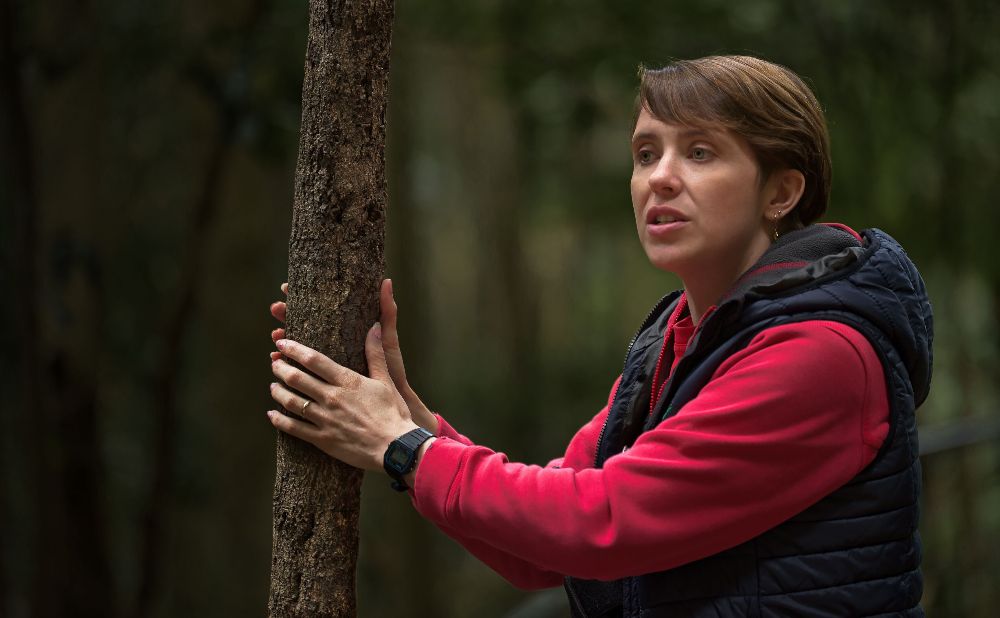
“Most Indigenous people don’t care about the colour of your skin. We care whether you care about Country, if you respect the lore, respect the land, respect the culture and the history. We care if you’re kind.”
Learn more about the Blue Mountains:
- Read Blue Mountain Dreaming
- Browse the Blue Mountains History Journal.
Photos: David Hill unless otherwise noted
